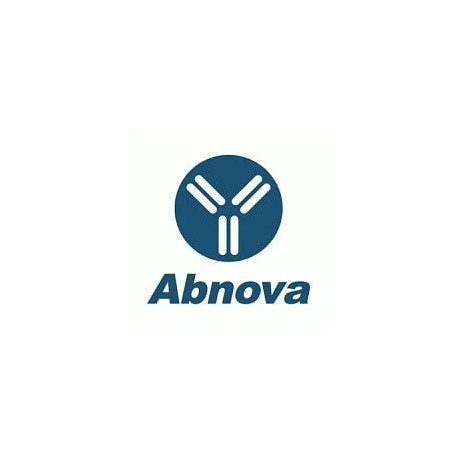Cart 0 Product Products (empty)
No products
To be determined Shipping
0,00 € Total
Prices are tax excluded
Product successfully added to your shopping cart
Quantity
Total
There are 0 items in your cart. There is 1 item in your cart.
Total products (tax excl.)
Total shipping (tax excl.) To be determined
Total (tax excl.)
Data sheet of PTBP1 polyclonal antibody
| Brand | Abnova |
| Product type | Primary antibodies |
| Reactivity | Human |
| Host species | Goat |
| Applications | ELISA,WB-Ce,IHC-P |
More info about PTBP1 polyclonal antibody
| Brand: | Abnova |
| Reference: | PAB6476 |
| Product name: | PTBP1 polyclonal antibody |
| Product description: | Goat polyclonal antibody raised against synthetic peptide of PTBP1. |
| Gene id: | 5725 |
| Gene name: | PTBP1 |
| Gene alias: | HNRNP-I|HNRNPI|HNRPI|MGC10830|MGC8461|PTB|PTB-1|PTB-T|PTB2|PTB3|PTB4|pPTB |
| Gene description: | polypyrimidine tract binding protein 1 |
| Immunogen: | A synthetic peptide corresponding to human PTBP1. |
| Immunogen sequence/protein sequence: | DGIVPDIAVGTKR-C |
| Protein accession: | NP_002810.1;NP_114367.1;NP_114368.1;NP_787041.1 |
| Form: | Liquid |
| Concentration: | 0.5 mg/mL |
| Recommend dilutions: | ELISA (1:8000) Western blot (1-3 ug/mL) Immunohistochemistry (Formalin/PFA-fixed paraffin-embedded sections) (5-10 ug/mL) The optimal working dilution should be determined by the end user. |
| Storage buffer: | In Tris saline, pH 7.3 (0.5% BSA, 0.02% sodium azide) |
| Storage instruction: | Store at -20°C. Aliquot to avoid repeated freezing and thawing. |
| Quality control testing: | Antibody Reactive Against Synthetic Peptide. |
| Note: | This product contains sodium azide: a POISONOUS AND HAZARDOUS SUBSTANCE which should be handled by trained staff only. |
| Product type: | Primary antibodies |
| Host species: | Goat |
| Antigen species / target species: | Human |
| Specificity: | This antibody is expected to recognize all 4 reported isoforms (represented by NP_002810.1, NP_114367.1, NP_114368.1, NP_787041.1). |
| Reactivity: | Human |
| Application image: |  |
| Application image note: | PTBP1 polyclonal antibody (Cat # PAB6476) staining (1 ug/mL) of Jurkat lysate (RIPA buffer, 30 ug total protein per lane). Primary incubated for 1 hour. Detected by western blot using chemiluminescence. |
| Applications: | ELISA,WB-Ce,IHC-P |
| Shipping condition: | Dry Ice |
| Publications: | Dynamic antagonism between ETR-3 and PTB regulates cell type-specific alternative splicing.Charlet-B N, Logan P, Singh G, Cooper TA. Mol Cell. 2002 Mar;9(3):649-58. |


